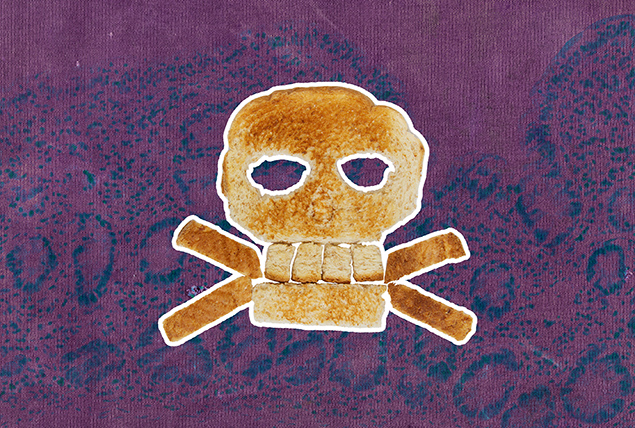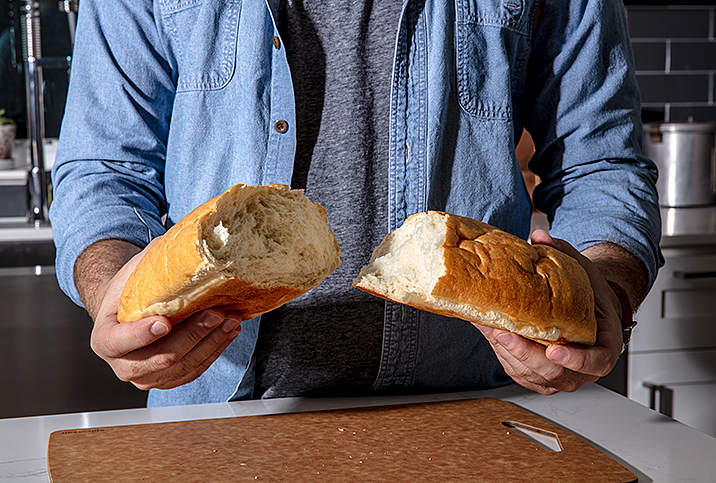Learn the Keys to Living With Celiac Disease

Celiac disease is a genetic autoimmune disorder characterized by reactions to gluten, a protein found in wheat, rye, barley and triticale. When a person with celiac disease digests gluten, the body responds with an immune reaction. It launches an attack on the body and damages the small, fingerlike projections known as villi that line the small intestine.
Experts believe as many as 3 million Americans are living with celiac disease, which manifests in three types:
- Nonclassical. Chronic abdominal pain is the hallmark of nonclassical celiac disease.
- Classical. Malnutrition sets classical celiac apart from nonclassical. Nonclassical celiac sufferers may experience some vitamin deficiencies, but classical celiac is often identified with symptoms indicating a "failure to thrive." Specifically, feces may appear pale, fatty or particularly smelly, and the ensuing starvation leads to weight loss and stunted growth in youths.
- Silent. This is the asymptomatic version of celiac disease that still damages the small intestine when sufferers ingest gluten.
Of the 3 million people in the United States who are living with celiac disease, an estimated 97 percent are undiagnosed.
Complications from celiac disease can include diarrhea, nausea and vomiting. Simply managing the disease on a day-to-day basis can seem daunting.
Interacting socially with celiac disease
Identifying the triggers of celiac disease may seem straightforward, but steering clear of gluten in social situations isn't.
Maintaining a gluten-free diet when you're the person cooking is one thing. Staying gluten-free while enjoying a night out is a totally different matter, explained Aniruddh Setya, M.D., a pediatric gastroenterologist with Memorial Health Network in South Florida.
"Dating someone with celiac disease is more anxiety-provoking to the person who has celiac than the person who does not," Setya said. "Avoiding gluten is not easy when dining out or attending social gatherings. People use the same knife when cutting regular bread and gluten-free bread and the same spatula for gluten-free pizza and regular pizza."
A new diagnosis is stressful enough; a person shouldn't have to feel like they're somehow more difficult to love because of it. Setya said you should never underestimate food's social value.
That might mean spending an extra minute researching restaurants before proposing a date or investing in unfamiliar ingredients.
"Sharing a meal with someone else allows you to spend time with, get to know them better, and is the foundation of many happy occasions," he said. "For many who have celiac disease, the anxiety that comes with relying on others to make a meal that is truly safe and gluten-free frequently overcomes the happiness of these occasions. For people who are afflicted, it is essential that they are vigilant about checking food labels to make sure the items they are consuming are gluten-free."
Preventing a celiac flare-up may be appreciated more by a person with the disease than taking care of them during one, although that is a valuable skill.
A celiac-safe home
Some basic rules to follow in the kitchen, according to Blanca Garcia, a registered dietitian nutritionist in Los Angeles, range from cleaning utensils to avoiding sharing dips.
"[Utensils] can be shared as long as they are washed in between uses," she explained. "If cooking or baking, gluten items should not be cooked or baked near gluten-free items, as there is a risk of cross-contamination. Use separate, dedicated condiments to minimize double dipping of gluten-contaminated utensils."
Garcia said you can use a few gluten-free grains as long as they are not cross-contaminated with grains containing gluten. Examples of gluten-free grains include:
- Amaranth
- Buckwheat
- Corn and cornmeal
- Corn tortillas
- Quinoa
- Rice
- Tapioca
- Wild rice
Gluten-free flours are OK to use, too, and include:
- Rice
- Soy
- Corn
- Potato
- Bean
The list of rules to prevent a celiac flare-up in a loved one includes the following, according to Garcia:
- Create a separate cabinet for the person with celiac disease.
- Set aside a separate shelf in the refrigerator, preferably the top shelf.
- Take extra care to wash reusable plastic containers between uses.
- Avoid takeout boxes of poor quality that may absorb foods and cause gluten exposure.
There are a number of foods containing gluten that most people wouldn't expect, according to Joseph Shami M.D., a gastroenterologist with Gastroenterology Associates of New Jersey. Those include the following:
- Blue cheese
- Bouillon cubes
- Couscous
- Deli meats
- Dry-roasted nuts
- Hot chocolate mixes
- Hot dogs
- Jelly beans
- Licorice
- Malt vinegar
- Miso
- Nondairy creamer
- Oatmeal
- Pickles
- Pudding
- Salad dressings
- Seasoned potato or tortilla chips
- Soups
- Soy sauce
- Spice blends such as allspice
- Veggie burgers
- Certain premixed coffee drinks
If all that information makes you feel like you need a drink, Garcia explained that a person with celiac disease is limited in that area, too.
"If [someone is] wanting to consume alcoholic beverages, gluten-free choices are wine, ciders and spirits," she said. "Some beverages that can contain unsafe levels of gluten [include] dessert wine, bottled wine coolers, ales, lagers, malt beverages [and] malt vinegar."
Counteracting accidental gluten exposure
If a celiac patient experiences gluten exposure, dehydration is an immediate risk. Water is ideal, but coconut water contains potassium and replaces electrolytes, while ginger or peppermint tea can soothe stomach discomfort. Probiotics are an important resource, and Shami recommended eating light for a few days: clear broths, bananas and other nutritious snacks.
Charcoal pills can be used to expedite the gluten flush but may bind to other medications, so consult a doctor before using them. The magnesium in Epsom salt baths is also thought to draw out toxins or at least provide relaxation. Sleep is essential; even if you're in too much pain to fall asleep, try to lie still with your eyes closed.
Any calming audio sounds, such as guided meditation, ambient sounds or rainfall tracks, could be helpful.
Celiac disease doesn't have to isolate its sufferers, especially once they're ready to bounce back from a bout. Setya recommended the Celiac Disease Foundation and Celiac Facts for Patients as solid resources, the latter of which includes learning modules for patients to educate themselves. The Beyond Celiac organization not only spreads information about the disease but is also actively working toward a cure.
If you feel like you can't read another word or learn another fact, take a break and consider searching for gluten-free bakeries near you.


















